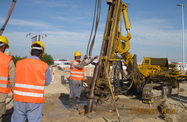House prices in Saudi Arabia are expected to rise further on the back of high demand for homes and a slow rollout of developments, with figures suggesting housing requirements will continue to outstrip supply even as new projects reach completion.
Saudi Arabia’s population has quadrupled to around 30m over the past four decades and is expected to reach 40m by 2025. The population growth rate was 2.7% in 2013 according to the Central Department of Statistics and Information (CDSI). Only 30% of the population currently owns residential property, which, coupled with a high urbanisation rate, will continue to sustain property demand.
In a bid to meet market shortfalls, the Kingdom has accelerated new home delivery, while other measures, such as encouraging real estate activity on unused land, are also under consideration.
Addressing the shortfalls
A report by real estate consultancy Jones Lang LaSalle puts Saudi Arabia’s housing shortage at around 1m units. The firm calculates that the Kingdom needs to make at least 200,000 homes available annually to keep up with demand, before any progress is made in bridging the housing gap. The report, published in mid-October, noted that while new units would augment stocks in the two main cities of Jeddah and Riyadh, easing some of the pricing pressures, they would fall short of plugging supply shortfalls.
The undersupply has sparked a rise in sales prices and rental charges across all segments of the residential market in these cities, according to another international real estate consultancy, Knight Frank KSA. Residential property prices in the capital, Riyadh, rose 5%-7% year-on-year to November, with prices set to continue on their upwards trajectory. The report added that a lack of housing stock on the market in the north of the country had led to a 9% rise in prices over the past 12 months.
Unlocking potential
Some analysts have suggested that a move to unlock land currently lying idle could prove effective in helping to spur real estate activity. A report in October by the McKinsey Global Institute research group said that large areas of land with access to essential infrastructure in Riyadh could be released for residential use, possibly by incentivising owners to build through imposing “idle land taxes”.
The report said many smaller-scale developers and contractors lacked the opportunity to build capacity incrementally given the “fragmented” nature of the real estate sector. Additional support to small and medium-sized enterprises in the property development and construction segments would improve the competitive landscape and better equip Saudi Arabia to meet its housing needs, it concluded.
Building solutions
The government is already weighing the idea of a levy on undeveloped urban land to encourage building activity. The state is also moving to free up more land and inject public funds into expanding stocks, as part of a $67bn programme aimed at adding at least 500,000 housing units for lower-income families.
In mid-November, the Housing Ministry said it had broken ground on a 700,000 sq-metre low-cost housing development in Al Jammom. The announcement followed news that two locations around Jeddah have been earmarked for an even larger development of apartments and villas, spanning 31m sq metres.
But despite efforts to fill the housing gaps, the projects still fall short, according to media reports. Abdullah Al Balwi, a member of the Jeddah Chamber of Commerce and Industry’s real estate committee, estimates that land allocated for housing would need to be doubled to meet demand. “Applications for houses far surpass the expected supply from this project,” he said..
Developers additionally face the challenges of a construction sector operating at strained capacity. A lack of skilled workers, competition for materials from elsewhere in the region and a huge workload bumped up by the government’s massive infrastructure programme, make it difficult for developers to bring together the resources needed for large-scale property projects. With an estimated $784bn worth of construction work either on the drawing board or under development, pushing new residential projects through the pipeline to completion looks likely to be a lengthy and challenging process.

